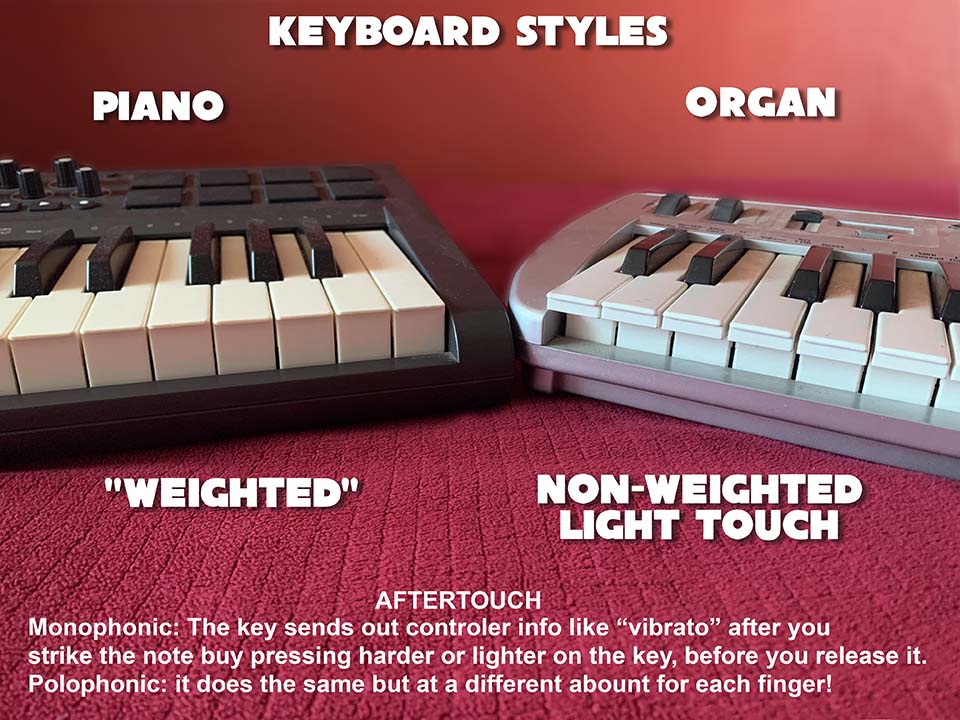
25-Two Octaves
49-Four Octaves
61-Five Octaves
73-Six Octaves
76-Six 1/4 Octaves
88-Seven 1/4 Octaves
Pads are traditionally used to trigger drum or percussive sounds. You can also play notes!
 |
|||
| Keyboard styles are based on your personal taste. If you are trained on a "light touch" or "non-weighted" keyboard, like a home or pipe organ or an inexpensive synthesizer, it is sometimes difficult to play a "weighted" or "heavier touch" acoustic piano. There are differences in the "feel" of real acoustic piano keyboards as well. Synthesizer manufacturers make instruments that only "emulate" the sound & feel of acoustic pianos which were nicknamed "Clavinovas" by the "Yamaha" corp in the early years. The name has evolved into simply a "Digital Piano". The device plays back digital recordings of a real acoustic piano through built-in speakers or headphones. Some sound truly amazing. There are also real acoustic pianos that have a MIDI (Musical Instrument Digital Interface) sensor on the keys and you can send "notes" to synthesizers and play any sound imaginable form a piano these days. (I was the 1st student at the Juilliard School; Of Music Conservatory to play a concert of original music on the 1st MIDI Real Acoustic Grand Piano at Lincoln Center in 1988!) Some manufacturers also offer a "semi-weighted touch" keyboard which is a mix of the two. Many of these devices also offer a software knob or feature which enables you to electronically modify the "touch" with a "curve', so you can make the keyboard feel even better to you! | |||
| How many "keys" or "notes" should you get"? | |||
| There are 128 assignable "keys" in MIDI. A traditional piano has 88, (there are some with a few more but rare). Organs have 61. So these are the 2 most popular. Get as many as you can afford, but the more heys, the bigger the size and the heavier it is to transport! The standards are: | |||
25-Two Octaves |
|||
| What about Pads or Sliders & knobs and pedals? | |||
| There are 3 "Pedals" on a real acoustic grand, they can be emulated on a synth. Most people are fine with just the Sustain pedal. Classical buffs need all 3. Modern pianos usually have three pedals, from left to right, the soft pedal (or una corda), the sostenuto pedal, and the sustaining pedal (or damper pedal). Some pianos omit the sostenuto pedal, or have a middle pedal with a different purpose such as a muting function also known as silent piano. |
|||
Pads are traditionally used to trigger drum or percussive sounds. You can also play notes!
|
|||
| Sliders & Knobs are most often used for volume, but there are 128 assignable controllers, so the more the better. | |||
| Professor Musial | |||